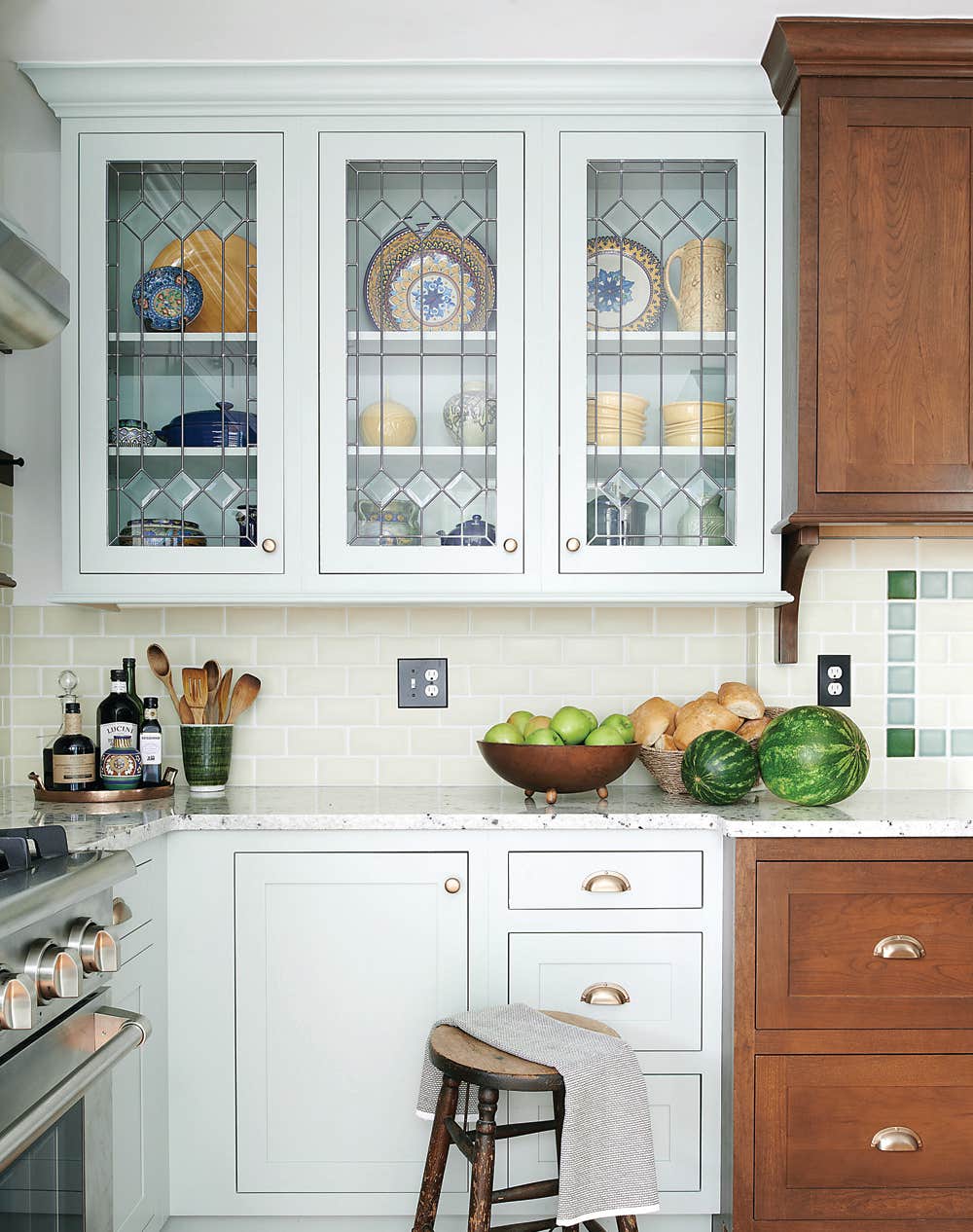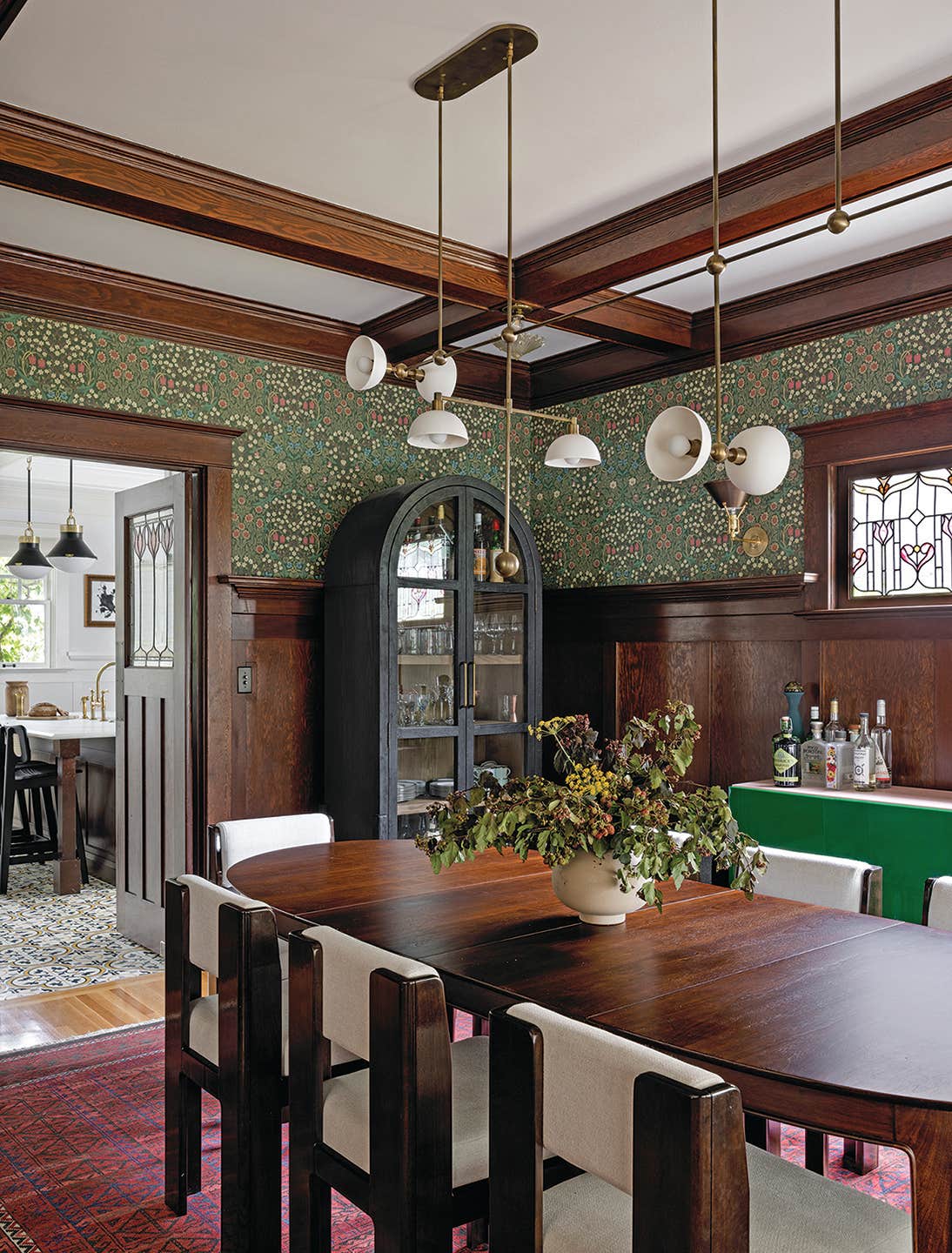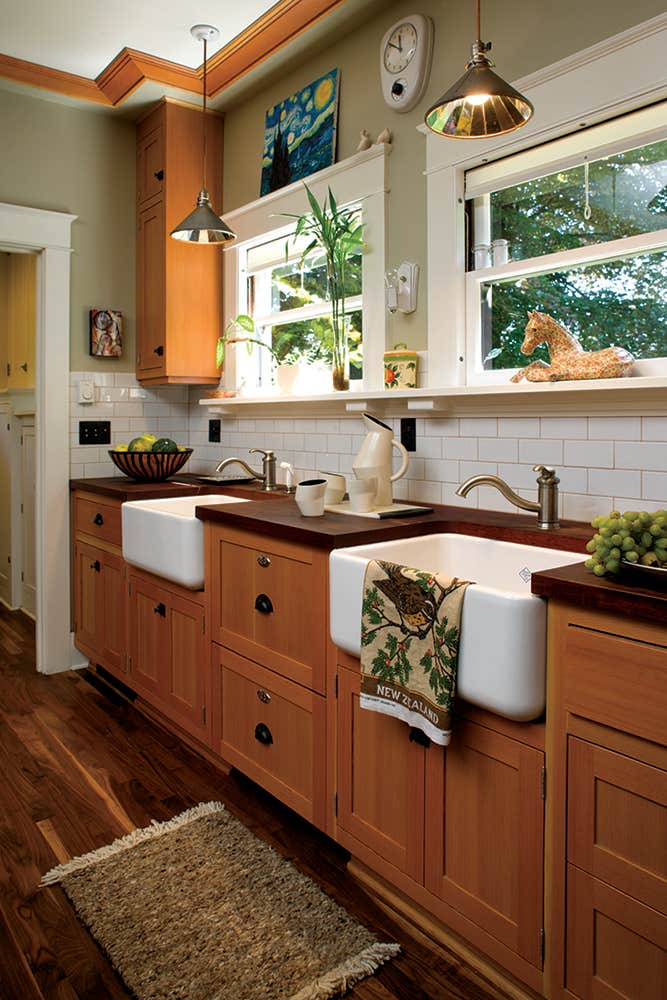The Vintage Kitchen: Appliances 1905–1930
Appliances have a big footprint, so it’s no wonder that manufacturers have been busy trying to make them disappear beneath decorator-friendly panels for years. For those looking for period-sensitive styling, though, there are three ways to create a nostalgic look—and it’s possible to mix and match these approaches.
One approach is to go for the real thing: restored vintage appliances of a style and era that may actually have appeared in your home. The second is to fake it, but to do so in a way that reflects style details in your house (e.g., original cabinetry). The third option is to buy reproduction appliances.
Understandably, ranges and refrigerators from the first decades of the 20th century tend to be hard to find, especially those with desirable features like six burners or twin refrigerator compartments. Restoring one of these antiques is a major commitment in itself.
Finding an expert restorer also can be challenging. A recent backlog for gas stoves at one well-known dealer was four months (six for refrigerators). The process itself can take weeks; more than 80 hours of labor is typical for a vintage refrigerator and slightly less than that for a range, according to Antique Appliances in Clayton, Georgia.
If follows that such restorations don’t come cheap. Even a small fridge—one with the capacity of a modern under-counter unit, like a 1930 Frigidaire made by General Motors—can cost close to $4,000. An in-demand range, like the hard-to-find six-burner, double-oven enameled Glenwood SNJ, usually costs in excess of $10,000 restored. Where you find it and have it restored can cost money too, considering that shipping costs can run into hundreds of dollars.
If panel inserts are starting to sound more appealing, the good news is that it’s possible to tailor them for a period or style-specific look. There are even companies that sell kits that transform a contemporary double-sided refrigerator into a replica of a full-size icebox, complete with oak paneling and nickel-plated hardware. (New “vintage” hardware is available separately, too.) One intrepid restorer, Bill Ticineto, built his own oak paneling for a new side-by-side refrigerator with a bottom freezer drawer. He then collected a complete set of icebox hardware through online searches. After the latches and hinges were replated and polished, “they look absolutely brand new,” says Bill.
Dishwashers are probably the easiest appliances to conceal in matching cabinetry: a good carpenter can create a face that matches wood, style, and finish. The disguise is even better if you arrange a front of false drawers.
If you insist on new appliances, as many do, you’ll find reproductions (or adapted period styling) for every conceivable appliance, even microwave ovens and vent hoods. Finished with porcelain and trimmed with nickel, these appliances typically have the same features as conventional ranges and refrigerators.
The limiting factor is that reproduction appliances tend to fall into one of two categories: the nickel-plated look most typical of the turn of the 20th century (styling that some consider Victorian), and the Retro look of the 1940s and ’50s. For the kitchen range, at least, alternative options include classics like enameled AGA cookers and nickel-trimmed Lacanche ranges.
RESTORING A VINTAGE APPLIANCE
If you’ve found a vintage range or refrigerator (or if your house came with one), you can have it restored. Qualified restorers are often booked far in advance.
Restorations usually require both exterior and interior refinishing and an overhaul of all working parts. If the exterior finish is in relatively good condition, ask the dealer to preserve the original porcelain or enamel surface and simply repair bad patches or chips. Surfaces in poor condition can be sand-blasted and re-fired with a new porcelain coating.
Similarly, decorative and functional metalwork, knobs, and interior shelving should also get a sensitive brush-up. Missing or worn lettering on controls can be expertly repainted, and metalwork polished and buffed. Even heavily corroded original metalwork will gleam like new with professional replating.
Retrofitting the interior works varies depending on the client’s desires as well as the condition, age, and type of appliance. For ranges, working parts including gas valves and thermostats are taken apart, cleaned, inspected, and reassembled or replaced. Conversions (from coal to gas, propane to natural gas, or gas to electric, as examples) take place at this point. It’s possible to get an all-new stainless steel speckleware interior and stovetop with cast iron burners, says Richard Richardson of Good Time Stove Company. The interior gets new insulation and gaskets; pilot lights and thermostats are calibrated to meet modern safety codes.
For refrigerators, working parts like compressors, condenser coils, and thermostats are inspected and either overhauled or replaced. New refrigeration systems typically use environmentally friendly refrigerants. A good dealer will also fit the fridge with a custom-made gasket, and if need be, a new door liner. Antique Appliances runs its restored refrigerators for 10 days to make sure temperatures stay consistent.
Mary Ellen Polson is a creative content editor and technical writer with over 20 years experience producing heavily illustrated know how and service journalism articles, full-length books, product copy, tips, Q&As, etc., on home renovation, design, and outdoor spaces.







